It’s been two weeks since my first report on the world of Hyboria. In that time, I’ve traversed a wide variety of sprawling frontiers, met a colorful cast of characters, gone to-to-toe in enjoyable combat against all sorts of disreputable scoundrels, and enjoyed what is likely the most impressive game soundtrack I’ve heard this year. One sentiment has endured throughout my entire time in this world; Age of Conan is surprisingly full-featured for a game previously described as lacking. Being the sort of fellow that usually rushes for the level cap in these sorts of games, it’s been refreshing to play one that seems determined to provide reward in nearly every avenue. Feedback is frequently provided to the player via the game’s various systems of interaction. Some of it is more immediately obvious, like plentiful and useful quest rewards. And some of it is an accumulated impression, like the smooth combat or the persistent establishing of mood in the environments.
But as much as I’ve been pleasantly surprised, I’ve also been disappointed with a number of issues not frequently mentioned in community assessments. While Age of Conan has obviously done away with many of its more notorious faults, there’s still some rough edges yet to be smoothed out. Read on to find out what you should and should not expect in your own quest to hang with Conan.
I covered the character creation system in the previous installment, but what I failed to mention was that there is an almost overwhelming number of opportunities for achieving total badassery. Each race has a rough-but-likable quality to them, something that will grow as their cultural norms become expressed more and more throughout the game. The Cimmerians are hard-edged survivors, eking out a combative existence in the harsh snowy mountains of their homeland. The Aquilonians pride themselves on their civilized society, and their white-columned city and grassy farmlands are pretty reminiscent of ancient Greece. The Stygians worship the serpent god Set, and there’s a feeling of creepy, ancient mysticism driving their pursuits within their desert kingdom. The Khitans, unfortunately, are a bit less interesting, seeing as how they seem the most closely modeled after the real world inspiration of ancient China. Altogether, it’s really easy to pick favorites and become involved in their goals. Having a literary source to draw from definitely helps elevate Age of Conan above the usual made-for-TV quality of video game stories.
From the class selection alone, you are presented with a wealth of options to play with. While you will find your typical flavors like the plate wearing tank, the light armored stealth and dagger fighter, the ranged archer, the offensive caster, and the stationary priest, there’s also a lot of unique choices. The Conqueror is a melee damage class that can also provide buffs to their teammates via two types of auras, as well as a banner that can be placed for additional effects on players positioned close to it. The Herald of Xotli is a mage-type offensive caster that swings a two handed sword imbued with flame to cause area of effect damage. Most every class has a unique quality that makes it inviting to play, and I had a difficult time making a decision. A lot of time I could have spent advancing to highlevel content was spent experimenting with race and class combination and trying out each one to see how they played.
At level 20, each class has two primary talent trees, and then a third called General which is less specific. Within the two main talent trees, you can customize your playstle. For example, the Conqueror class has the “Brute” and “Carnage” trees. Talent points spent in the Brute tree are targeted towards fighting with a two-handed weapon and serving as an offtank. The Carnage tree focuses on dual-wielding one-handed weapons and increasing damage output. Most of these talents are pretty specifically geared to their respective playstyles, and you can even unlock new abilities and combos for use in combat. The General tree for the Conqueror lets you choose between types of damage mitigation, increased resistances, increased damage, etc.
In addition to talent trees, classes are all given “skill points” with each level to invest into more basic traits that all players have. Things like run speed, health recovery rate, stealth detection, and the ability to climb higher on ladders and vines can be customized with skill points. It’s a fun little bonus that lets you have some control over what MMO gamers call “quality of life” elements, i.e. simple conveniences or useful additions for your character. They can be easily reset within the menu, letting you move points around depending on what you want to do at the moment. Want to climb a particularly tall ladder or cliff face? Remove some points from Endurance and put them into Climbing, then switch them back when you’re done. There is a small fee associated with changing any skill that has more than 200 points invested, but it’s entirely manageable.
Also encouraging this rampant class experimentation is the combat, which is pretty damn fun the first time and the hundredth time. While there is still the usual MMO model of awarding more combat capability as you level up, every class begins with the same set of “directional attacks” – upper left, middle, and upper right – which are mapped to the first 3 number keys. Basically, pressing one of these begins a single swipe from your weapon in the direction chosen. The reasoning for these directional attacks is that enemies will concentrate their defenses at any of these three points, as indicated by the shield icons around their model. Attacking sides that have fewer shield icons will cause more damage, and the enemy will dynamically change which sides they stack defense on, often in response to where you’ve been concentrating your attacks.
Each class learns what is Age of Conan’s version of typical combat abilities, called “combos” here. In most games, you press a single button to activate a combat ability, but here you must follow a series of onscreen prompts indicating directions in order to complete the desired effect. Combos can be anything from a series of rapid blows, or include debuffs like damage over time effects. For any MMO gamer accustomed to autoattack, myself included, it can be somewhat jarring at first. Soon you’ll find that it grows on you, and helps keep a freshness to every encounter, which is a huge benefit considering combat is your primary method of advancement in just about every MMO ever. The combat animations are very smooth and responsive, and the sounds of blades clanging and slicing flesh are plentiful. It lends a sort of pick-up-and-play immediacy to it; you’ll want to hop on just to bust some more heads, similar to how you might want to load up an oldschool beat ’em up just for the fighting.
If I had any complaint to make about the combat, it’s that the smoothness of it is entirely at odds with the sluggish movement experienced while fighting. While you can strafe and move about as per usual, and even dodge in a direction by double-tapping a movement key, the inability to change your mouse sensitivity absolutely drove me nuts. It’s fine for some of the less subtle heavily armored classes who can go to-to-toe with most enemies pretty easily, but classes like the Assassin or Ranger who could benefit from a higher level of maneuverability are pretty much out of luck. When I played as a Ranger, I was generally unable to put much distance between myself and my enemy once they had gotten free of my opening movement restriction attacks. It’s really jarring coming from, say, World of Warcraft where you can snap your character around with a flick of the wrist to maximize mobility between stationary attacks. I guess some folks wanting a more “realistic” experience will enjoy this, but for me it was really frustrating to deal with sometimes. While I’ve yet to play my Ranger at a higher level, it’s hard to picture kiting anything, making larger packs of mobs pretty much guaranteed aggravation.
After level 20, you will be allowed to leave the starting city of Tortage, which if you recall from the previous article has been universally considered to be a dreaded transition, a deathblow to any remaining vestiges of fun, forever dooming the player to a barren wasteland of dissatisfaction, the likes of which will be written in gamer history as an unforgivable and catastrophic sin. Hyperbolic? Sure, but overreactive hyperbole is the language of the gamer. The gospel, even. Condemnations are doled out by armchair critics much in the way Moses read from the tablets. But folks forget that the MMO is a unique breed, and often experiences a series of ongoing changes and refinements. So while I don’t doubt the initial complaints made against Age of Conan were true, they certainly – at least for the majority of the game – no longer apply.
After you leave Tortage, you will be sent to your race’s capitol city or primary settlement, with the exception of Khitans who get dropped off in the Gateway to Khitai zone that more or less serves the same purpose. Within these capitol cities there are a handful of quests that can be completed within the walls, and you also have the choice of traveling to any of the other cities. Altogether there are four distinct spots for you to quest in after Tortage, each with a wealth of quests, and you can easily mix and match to keep the scenery fresh. Quests that remain in your log as you gain levels can still be turned in for their full amount of EXP even after they’re considered below your level, which is not only a huge boon to flexibility, but will also please OCD completists who have to finish every quest. Aside from the lack of voice acting, I’d say there’s just as much if not more content than Tortage. Up until at least level 50, you will be able to pick up way more quests than you’ll ever need, with the option to explore four massive areas while doing so.
However, it’s important to note that there’s a difference between having a lot of quests to do, and having a variety of quests to do. A good majority of the quests here are variations on kill or collect quests. They do manage to prove fairly sustainable, thanks to the above mentioned pleasurable combat and the fact that they send you deep into the fantastic environments. I didn’t particularly mind what I was doing as long as I got to play with the combos and shield system some more. Unfortunately, encounters seem to really get tough around the mid to late 40s. There’s an almost definite line dividing the first half of your leveling experience from the second half. Packs of enemies become denser, clustering around and directly on top of main roads through zones. Patrols of four or more opponents make winding circuits and have a habit of sneaking up on you. Aggro range seems to increase, many enemies are capable of summoning other enemies, and a host of other annoyances. At this point, combat becomes a bit less enjoyable, since it feels like you’re barely able to make a dent in the enemy population between you and your destination before a bunch more replace them in front of your eyes. While you certainly can solo all the way through till 80, the latter half of the game doesn’t seem particularly designed for this. It becomes increasingly risky to do things by yourself.
Furthermore, around level 50 you’ll begin to collect a large quantity of quests covering at least four separate dungeons that can only be completed with a group, while the zone-based quests begin to dry up. I suppose this is all fine and dandy, seeing as how many people consider the primary purpose of playing a multiplayer game to be teaming up with other players. I can’t argue with this in the least, but it does annoy me to not be presented with much choice. Particularly when grouping in Age of Conan requires my most hated of MMO drudgeries – calling for members using the chat channels. Yes, I know that this is an ancient tradition, and that every MMO has required this loathsome activity up until World of Warcraft introduced its dungeon finder system earlier this year, but I don’t care. I’ve hated it since my first MMO and I will continue to hate it for as long as it persists. There are a lot of incentives to join a guild, like crafting bonuses and a private instanced city that the guild can customize, but I’d argue that the biggest incentive is not having to spam chat channels for people to play with.
These inconveniences can be lessened or avoided entirely with another of the game’s many pleasant rewards – offline leveling. For every four days of paid subscription time, you will be granted one free level to spend on any character above level 30. There are plenty of reasons and ways to use them, too. You can accumulate a handful to spend at once to help you get over a hump or improve your chances at finishing a tough quest line. You can spend one every four days if you wish, just for the sake of having an additional level, or you can distribute them evenly across your entire roster of characters. To sweeten the deal, once you reach level 50 with any character, you are allowed the opportunity to make one new character that starts at level 50, so you can enjoy another class without having to repeat too much in order to catch up. You’re also awarded “Veteran Tokens” during your subscription time. These tokens can be spent at specialty vendor NPCs that sell things like EXP bonus potions, mounts and riding training, cool cloaks, non-combat pets, etc. In my month of play, I already have enough for a mount and training, so the rate of accumulation is fairly generous. Altogether it’s a really nice system that I absolutely love. It’s great for making Age of Conan feel less like a timesink and more like a game you can enjoy at a relaxed pace, which is a trick pretty much every MMO needs to learn at this point.
The biggest strength of Age of Conan continues to be its massive world. It constantly invites you to explore, with all kinds of interesting landmarks and landscape stretching out before you. Systems for travel are pretty helpful and easy to understand. Every main city has a path leading to the neighboring outlying zones. Each zone has at least one main settlement, and at each of these settlements, travel NPCs will take you to any main settlement within the region, generally for free. You can travel between smaller settlements within zones by using separate travel NPCs that specialize in their specific zones. It’s a pretty understandable hierarchy. Yes, Age of Conan is divided into zones, but it’s more like Guild Wars than, say, Final Fantasy XI. Transitions between zones feel pretty natural despite the loading screens. World of Warcraft may have a streaming world, but you’ll never find any jarring zone transitions here. All the regions feel cohesive despite zone lines, and are altogether much less compartmentalized than Blizzard’s popular game.
Further contributing to the sense of primal wonder is the excellent music. In 2008, the composer received the IMFCA’s award for Best Original Score for a Video Game or Interactive Media. Ranging from haunting, mournful vocals to thundering drums of triumph, each track really compliments the game’s atmosphere. It’s beyond just background noise. It’s involving, and seems to be a natural part of Hyboria’s essence.
It can easily be argued that most things presented to the user are done so with definite purpose. There are a few loose ends and inconveniences, but even when the game is beating your ass into the dirt with packs of relentless enemies, it’s doing so to convey a sense that you are part of a truly savage world, forged only by the battle-hardened. It’s never outright impossible, and there are a number of alternatives for getting through tough spots, such as using offline levels or still being able to receive EXP for visiting content you missed along your journey. It gives you just enough to remain pleasant and easy on your schedule, while not coddling you into sleepy boredom. Fans of immersion and roleplaying will have no trouble becoming attached to their characters and the people they interact with in the untamed frontiers.
For the next installment, I’ll likely be wrapping up my time with Age of Conan, at least for the time being. I’ll be sure to expand on things like crafting, PvP, and community, and summarize the overall state of the game’s likely longevity. Stay tuned!
Cameron
cameron@variableghz.com

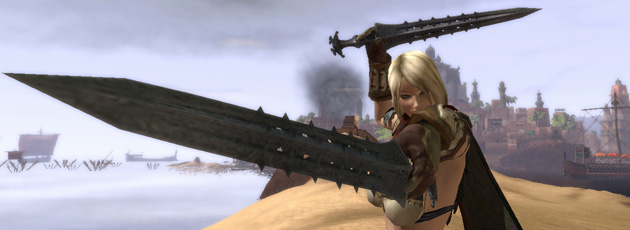
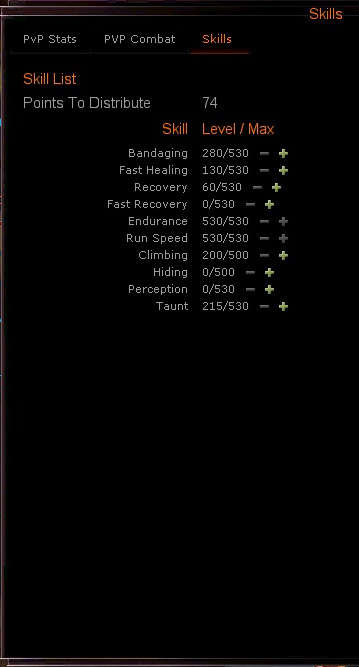
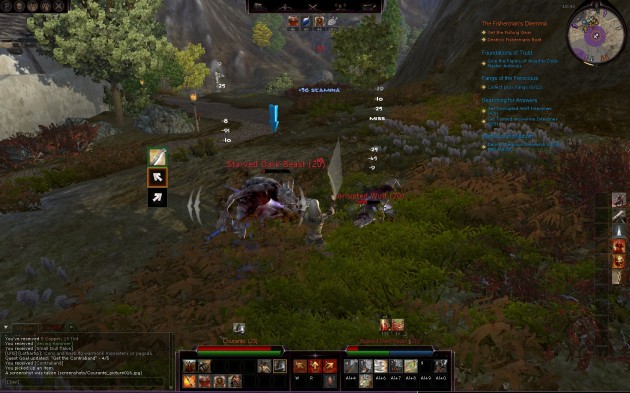
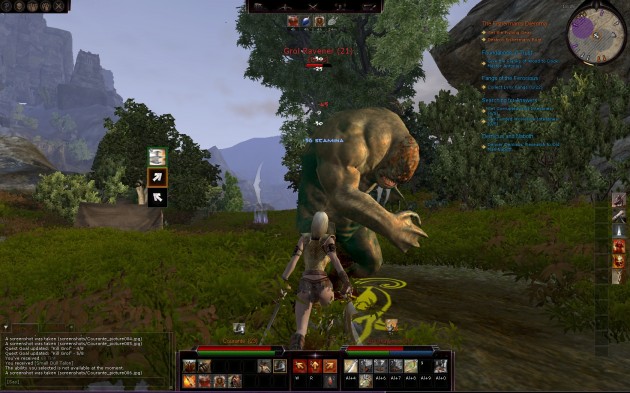
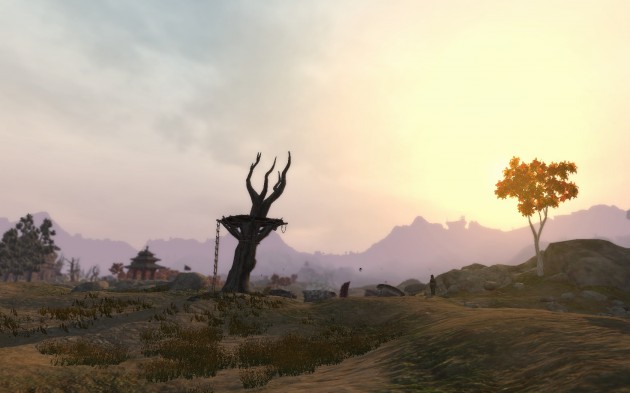
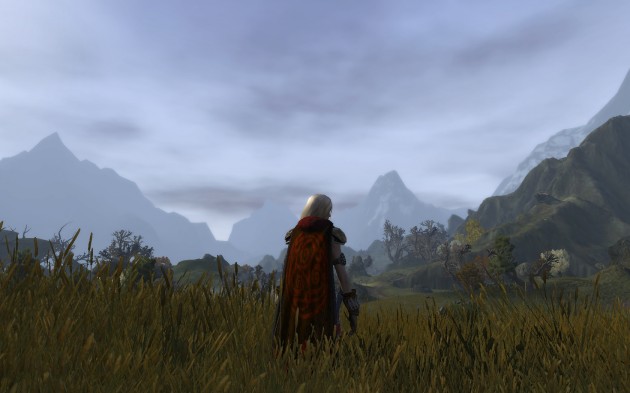
thanks for this well written and in depth article! will there ever be a part 3 or did you get bored?
Glad you liked it!
I would have loved to write more, but as I advanced in the game my computer started struggling more and more and I couldn’t comfortably access enough content to write a third part. Combined with trying to work on finding a decent design for the site (something I’m still messing with) for an official launch, and, well…
Age of Conan is definitely something I want to return to some day. It really made an impression on me.